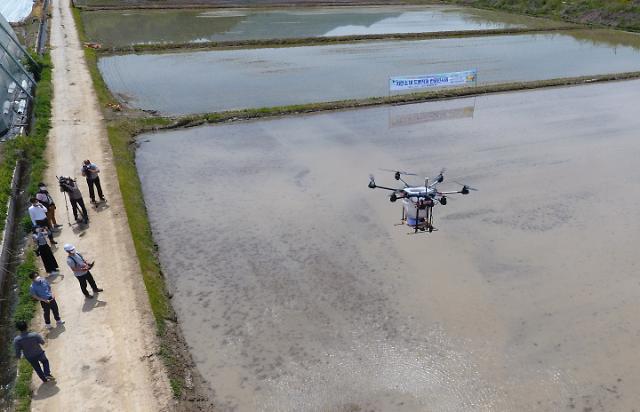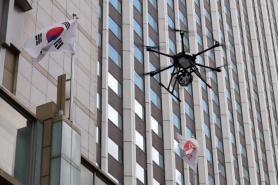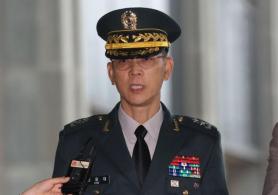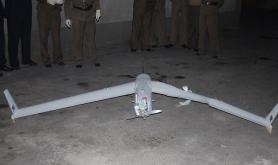
[Yonhap Photo]
Normally, farmers sow rice seeds onto standardized plates so that they can be transferred to paddy fields by hand or using rice planting machines. The agonizing process of rice planting is considered one of the biggest seasonal events in rural communities. Harvesting is normally done with machines. Poor farmers borrow planting machines.
Gangwondo Agricultural Research and Extension Services, a provincial research institute in Chuncheon some 75 kilometers (46 miles) northeast of Seoul, said in a statement on May 12 that the institute worked with Jin Air System, a domestic drone maker, to demonstrate a rice-sowing drone.
The demand for automated farming machinery has increased as South Korea's farming population is aging rapidly. Government data in 2018 showed that about 44.7 percent of farmers were aged more than 65 years old.
"The rice seed-sowing drone will help farmers save up to 1.2 million won ($1,068) per hectare. It will also save time," Kim Yun-sang, an official at the research institute, told Aju Business Daily. He said carbon emissions can be reduced by 32 percent. The drone can be equipped with a special device for crop dusting. "The drone can quickly spray pesticides to rice paddy fields just by switching parts," Kim said.
Copyright ⓒ Aju Press All rights reserved.




